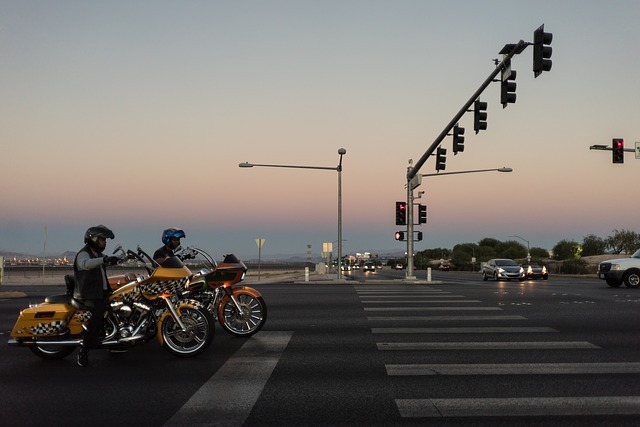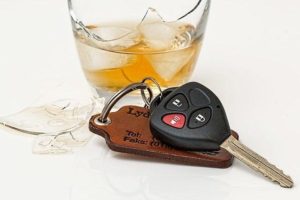Sharing the road with motorcycles is often difficult for people operating other vehicles. Many drivers who have been involved in collisions with motorcycles insist that they never even saw the motorcycle before the crash. In fact, a number of studies have shown that some motorists don’t notice motorcycles even when they are in their direct line of vision. It is this “inattentional blindness” that leads to many accidents – and far too many injuries and fatalities. The good news is that, with a little bit of training and preparation, drivers can make great strides towards making the road safer for bikers. Here are 10 tips for sharing the road with motorcycles.
1. Don’t zone out! It’s easy to slowly reduce your focus when you’re traveling a route you know well. This can lead to inattentional blindness and might result in you failing to notice a motorcycle on the road. Remain focused and alert as you travel. Try to avoid common distractions like cell phones, the stereo, and intense conversations.
For a free legal consultation,
call 1-800-668-6729
2. Be aware of your blind spot. Blind spots can spell disaster. Motorcycles and compact cars can easily be missed completely if they are in your blind spot. Turn your head and check your blind spots before you change lines, and try to keep aware of the vehicles riding around you at any given time.
3. Use your turn signals far in advance. Using your turn signal right as you begin a turn is almost as bad as failing to use it at all. Instead, use your turn signal far in advance of your turn or lane change, this allows others to plan their movements carefully around yours.
4. Don’t slam on your brakes. This is important for everyone on the road. Slamming on your brakes can put bikers and others at great risk. In an ideal world, everyone would ride with ample buffers between them and any other vehicle on the road. But with increasing levels of road congestion, this is not always feasible. Slamming on your brakes puts you at greater risk of being rear-ended. If another car rear-ends you, the results may just be a dented bumper. However, if you are rear-ended by a motorcyclist, it could mean serious injuries or even a fatality. Apply your brakes gently and allow yourself and others ample time to stop.
Click to contact our personal injury lawyers today
5. Allow bikers ample buffer space. Bikers often rely on an escape route to avoid a collision. As a car or truck driver, if you suddenly see a large scrap of a torn tire on the road ahead of you, you can run over it without much fear of damage to your car. But a biker most swerve and avoid the debris or risk a crash. Bikers are taught to keep a wide buffer around their bikes to give them an escape route should they need to get out of the way. Don’t encroach upon their space. Give them ample room on all sides of their bike.
Complete a Free Case Evaluation form now
6. Remember that the larger your vehicle, the more difficult it can be to see a motorcycle. If you drive a small car, you can just check your blind spots and probably be okay. But larger trucks and especially tractor-trailers have to be extra cautious on the road. Motorcycle frames are small and can be easily missed. Be sure to use your mirrors and turn to check your blind spots. Invest in attachment mirrors that allow you to see others on the road.
7. Remain in your lane. Motorcycles are entitled, by law, to take up the entire lane. Never infringe upon their space. Remember that bikers are taught to make rapid maneuvers to avoid crashes. Give them ample space on the road.
8. Be vigilant at intersections. Always obey the rules of the road at intersections. Intersections are particularly dangerous for bikers. Be sure to come to a complete stop before turning, use your turn signal, obey posted traffic laws, and proceed slowly. Simply moving slowly and being aware of others sharing the road could prevent many collisions.
9. Be aware of motorcycle turn signals. Bikers use turn signals just like other vehicles do. Some motorcycles do not have auto-canceling turn signals. If you see a biker traveling with a turn signal on for an extended period of time, increase your following distance to give you ample time to react.
10. Remember that motorcycles don’t get in fender benders. There’s no such thing as a minor motorcycle crash. Each and every motorcycle crash is potentially life-threatening. The rate of fatalities per mile traveled on a motorcycle is far higher than per mile traveled in a car. Remember that bikers don’t have a crumple zone or a steel cage to protect them. The best tip for sharing the road with motorcycles is simply to be aware that you share the road with them.
At Kass & Moses, we defend the rights of injured bikers every day. We believe in the freedom to ride a motorcycle across our beautiful country, and we understand the lifestyle. It comes with a risk, but it’s a risk that bikers gladly accept. We work to reduce those risks by sharing safety information with bikers and the general public. We also fight tirelessly to help injured bikers receive the best settlements from the insurance companies involved. We will fight for your rights, too! Contact us today at 1-800-MOTORCYCLE for more information and to learn how we can help you!
Call or text 1-800-668-6729 or complete a Free Case Evaluation form


